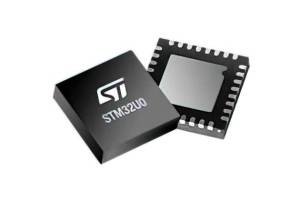Overcurrent protection is a critical component of electrical safety in residential, commercial and industrial environments. When excess current flows through a conductor, it can lead to overheating, damage to equipment, fires and electric shock hazards.
The two main methods for providing overcurrent protection are fuses and circuit breakers. While both interrupt the flow of excessive current, they have key differences in how they operate, their applications, and pros and cons.
This article will provide an in-depth overview of overcurrent and its risks, explain how fuses and circuit breakers work, thoroughly compare their capabilities and limitations, discuss proper selection and maintenance considerations, and review the evolving landscape of overcurrent protection technologies.
Understanding Overcurrent
Overcurrent refers to any current that exceeds the rated current carrying capacity of conductors and equipment. There are two types of overcurrent: overloads and short circuits.
Overloads occur when current exceeds 100% to 125% of the circuit rating over an extended time period, causing overheating of wires and equipment. Short circuits instantly spike current to a very high level, even thousands of amps, due to an abrupt fault like two bare wires touching.
Overcurrent can be caused by a variety of reasons, including loose connections, damaged wire insulation, overloaded circuits, lightning strikes, utility grid fluctuations, improper wiring, defective devices, and more.
The consequences of sustained overcurrent range from nuisance tripping of protection devices to much more severe effects like destruction of equipment, explosions, fires and lethal electric shock hazards.
Specifically, consequences include overheating of conductors and insulation, damage to equipment like motors and transformers, melting of fuse elements, triggering of circuit breakers, arcing faults, and in the worst case, electrically energized fires and explosions.
Even lower level sustained overcurrent can degrade insulation over time and lead to equipment failure down the road. The massive release of energy in a short circuit can extensively damage surrounding components. Clearly, protecting electrical systems from both overloads and short circuits is vital to prevent destruction of property, severe injuries and loss of life.
Fuses - The Basics
Fuses are a simple but effective type of overcurrent protection device consisting of a calibrated conductor designed to melt and physically break the circuit when overheated by excessive current. There are many types of fuses, each with specific characteristics for given applications:
- Fast-acting fuses containing thin fuse wire for the sensitive protection of electronics.
- Time-delay or slow-blow fuses using thicker wire to allow temporary inrush currents from motors and transformers during startup.
- High rupture capacity fuses designed to safely interrupt the enormous currents produced by downstream short circuits.
- Indicating fuses with mechanical flags that lift to show they've blown.
- Class types indicating speed of operation and current limitation.
Fuses are purely a one-time protection device - once the enclosed fuse element melts due to overcurrent heating, the fuse is permanently open and must be replaced with a new one for the circuit to operate again. Pros of fuses include very low cost, simple and compact construction, ease of installation, and very fast reaction time.
Drawbacks
Drawbacks involve having to keep spare fuses on hand and manually replace them when tripped. Fuses by themselves also do not provide the switching and instrumentation capabilities of circuit breakers.
Circuit Breakers - The Basics
Circuit breakers provide reusable and resettable overcurrent protection unlike single-use fuses. They contain an electromechanical mechanism that detects overcurrent and physically separates the electrical contacts to interrupt or break the flow of excessive current until manually reset. The detection mechanism can be a bimetal strip that bends and trips the breaker when overheated, or an electromagnetic coil that becomes magnetized by current to trip the mechanism.
Circuit breakers are made in both thermal magnetic and electronic types:
- Thermal magnetic breakers combine both a delay overload trip and an instantaneous magnetic trip in one unit.
- Electronic breakers use solid-state sensors and microprocessors for more refined sensing, timing, and tripping functions.
Key advantages of circuit breakers include reuse of the protection device after trip, having an OFF switch function for intentional control, and increased capabilities like instrumentation, monitoring and communication found in smart circuit breakers.
Drawbacks
Drawbacks mainly involve higher initial cost and the need for regular maintenance over the life of the more complex electromechanical components.
Key Differences Between Fuses and Circuit Breakers
The most fundamental difference between fuses and circuit breakers is that fuses are single-use devices while circuit breakers can trip and be reset repeatedly. Fuses provide a simple but faster reaction time to overcurrent, while breaker trip time is affected by heat buildup or electromagnetic sensor delay. In a direct short circuit, current-limiting fuses can respond in less than a quarter-cycle, under 0.01 seconds.
Fuses have minimal moving parts and simple construction using just a calibrated wire element. Circuit breakers incorporate more sophisticated electromechanical or electronic components that require maintenance over time. However, breakers provide capabilities beyond just overcurrent protection, like switching and instrumentation not found in basic fuses.
In terms of cost, fuses tend to have a lower upfront material cost, but need continual replacement when tripped. Circuit breakers cost more initially, but their extended lifespan offsets the higher initial price over years of operation. Breakers also facilitate automated control versus having to find and replace blown fuses manually.
Applications of Fuses
In homes, fuses protect outlets, lighting circuits and appliances. Cartridge or blade style fuses are common in autos, trucks and boats. High amperage power fuses protect industrial equipment and generators. Telecom facilities rely on telecom fuses on sensitive electronics. Fuses are ubiquitous owing to low cost, minimal space requirements and ease of installation.
Applications of Circuit Breakers
Circuit breakers are the primary overcurrent protection method for home and building electrical systems, with specific applications including air conditioner, furnace and major appliance circuits. In industrial settings, large breakers safeguard motors, compressors, turbines and other heavy machinery. Data centers, hospitals and telecom hubs use network-grade power circuit breakers for mission-critical systems.
Choosing Overcurrent Protection
Several key factors go into selecting the appropriate overcurrent protective device for a given installation:
- Rated voltage must match supply voltage and loads
- Ampacity must align with wire size and circuit loads
- Short circuit and interrupting ratings must exceed potential available fault currents
- Device must operate within desired speed for load type (resistive, inductive, capacitive)
- Environment and exposure to vibration, humidity, chemicals, heat/cold
- Budget constraints
- Visibility of indicators to quickly find tripped devices
- Ability for integrated remote monitoring and control
Properly exercising engineering judgment, safety margins, and detailed fault current analysis when selecting between fuses or circuit breakers for a specific application ensures optimal performance and protection. Case studies of coordinating overcurrent devices in complex electrical systems help illustrate best practices.
Installation and Maintenance
Overcurrent devices must be installed properly within equipment, panels or separately enclosed protection components according to all manufacturer specifications, including mounting, spacing, ventilation and torque requirements. Terminations to conductors should be secure and free of stray wire strands or improper connections that can lead to dangerous overheating under fault conditions.
Other key maintenance activities include replacing obsolete or damaged devices, properly disposing of hazardous materials, upgrading ampacity and short circuit ratings to align with evolving electrical systems, and addressing environmental factors like corrosion, heat or vibration that may impact long term reliability.
Safety Considerations
Working safely with overcurrent protection requires proper de-energizing, grounding and personal protective equipment when servicing devices. Warning labels, proper handling of hazardous components like asbestos or sulfur hexafluoride gas, and regular inspection of devices per manufacturer guidance is crucial. Thermal or arc blast dangers require avoidance of close proximity.
Bypassing or disabling overcurrent devices can lead to significant risks and should never be performed. Common mistakes like underrated components, incorrect installation or lack of maintenance can render protection ineffective and should be avoided through training and adherence to codes and standards.
Regulations and Standards
Installation and performance of both fuses and circuit breakers are tightly governed by national and regional electrical codes like the NEC in the US and international standards like IEC, which aim to strictly reduce electrical hazards across industries worldwide.
Additionally, product safety certifications like UL validate the manufacturing quality and reliability of these devices through design testing and field evaluation for regulatory approval. Compliance with these codes and standards is mandatory with no exceptions, and they are continually updated as technologies evolve. Adherence ensures consistent safe installation methods, standard ratings, robust manufacturing, maintenance protocols and operational features that maximize protection of life and property.
Conclusion
In short, fuses and circuit breakers both serve an indispensable role providing overcurrent protection, but have key differences in how they operate, their capabilities, limitations and preferred applications. Fuses are simple, extremely fast acting and inexpensive but require manual replacement. Circuit breakers permit resetting and offer more sophisticated capabilities beyond protection like switching, monitoring and communication.
While fuses are favored for inexpensive branch circuits and foolproof protection of sensitive electronics, breakers are specified for virtually all high amperage applications and complex power distribution systems. When properly selected, installed and maintained, overcurrent protective devices are vital to electrical safety across residential, commercial and industrial facilities.
As technology progresses, the landscape continues to evolve with more intelligent, connected and resilient overcurrent protection systems that prevent electrical fires, equipment damage, costly downtime and harm to personnel.





